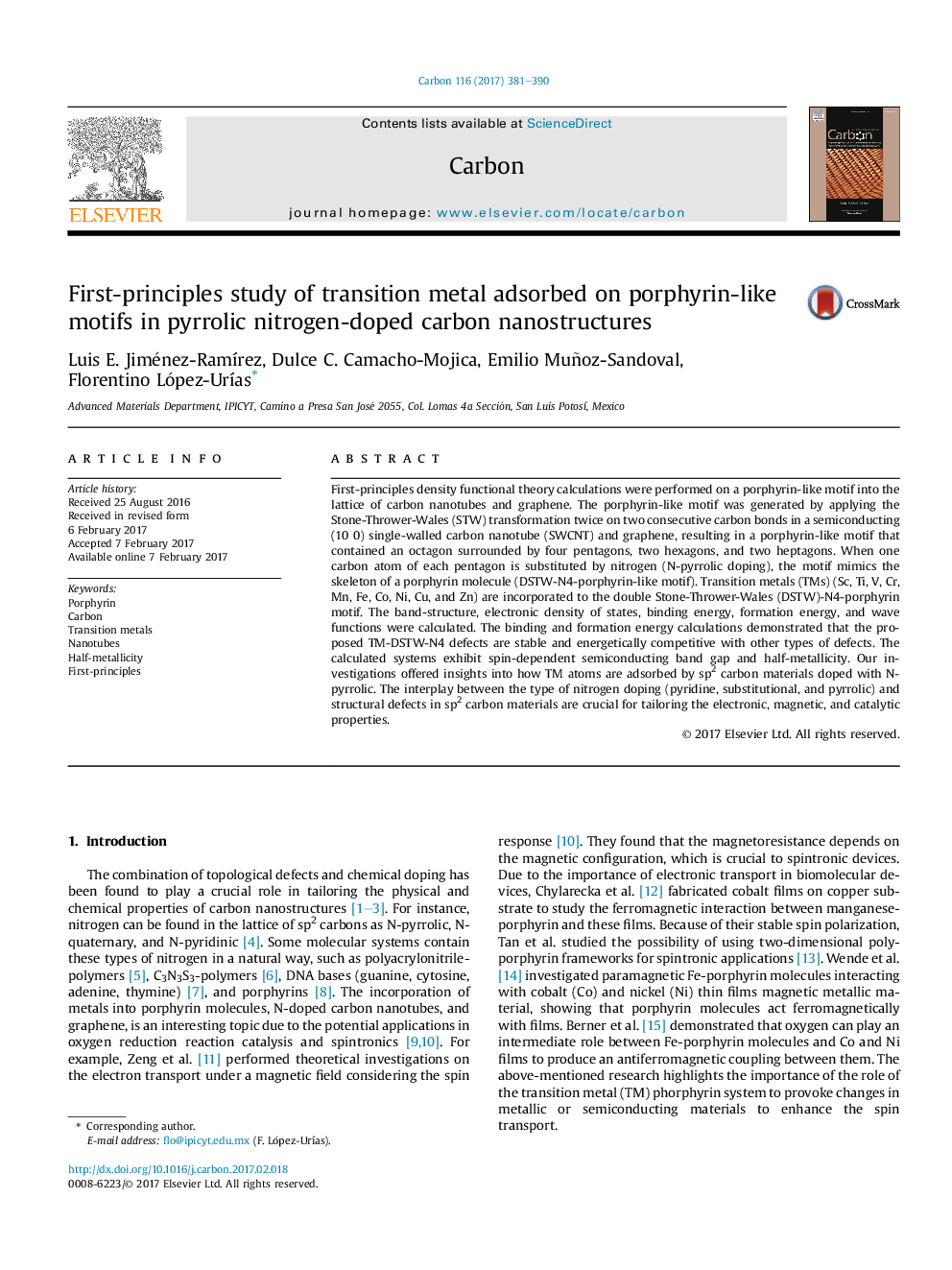| Article ID | Journal | Published Year | Pages | File Type |
|---|---|---|---|---|
| 5432195 | Carbon | 2017 | 10 Pages |
First-principles density functional theory calculations were performed on a porphyrin-like motif into the lattice of carbon nanotubes and graphene. The porphyrin-like motif was generated by applying the Stone-Thrower-Wales (STW) transformation twice on two consecutive carbon bonds in a semiconducting (10 0) single-walled carbon nanotube (SWCNT) and graphene, resulting in a porphyrin-like motif that contained an octagon surrounded by four pentagons, two hexagons, and two heptagons. When one carbon atom of each pentagon is substituted by nitrogen (N-pyrrolic doping), the motif mimics the skeleton of a porphyrin molecule (DSTW-N4-porphyrin-like motif). Transition metals (TMs) (Sc, Ti, V, Cr, Mn, Fe, Co, Ni, Cu, and Zn) are incorporated to the double Stone-Thrower-Wales (DSTW)-N4-porphyrin motif. The band-structure, electronic density of states, binding energy, formation energy, and wave functions were calculated. The binding and formation energy calculations demonstrated that the proposed TM-DSTW-N4 defects are stable and energetically competitive with other types of defects. The calculated systems exhibit spin-dependent semiconducting band gap and half-metallicity. Our investigations offered insights into how TM atoms are adsorbed by sp2 carbon materials doped with N-pyrrolic. The interplay between the type of nitrogen doping (pyridine, substitutional, and pyrrolic) and structural defects in sp2 carbon materials are crucial for tailoring the electronic, magnetic, and catalytic properties.
Graphical abstractPorphyrin-like motifs into the lattice of carbon nanotubes and graphene are studied using DFT-calculations. The porphyrin-like motif contains an octagon surrounded by four pentagons, two hexagons, and two heptagons. When one carbon atom of each pentagon is substituted by nitrogen (N-pyrrolic doping), the motif mimics the skeleton of a porphyrin molecule. We investigated the ability to adsorb 3d-transition metals (Sc, Ti, V, Cr, Mn, Fe, Co, Ni, Cu, and Zn) by this porhyrin-like defect.Download high-res image (692KB)Download full-size image
